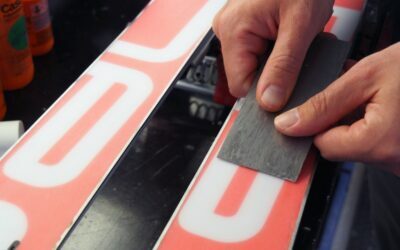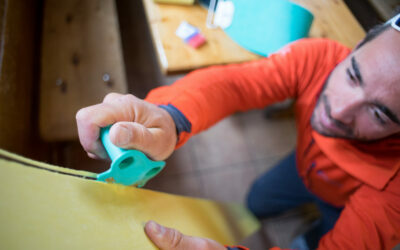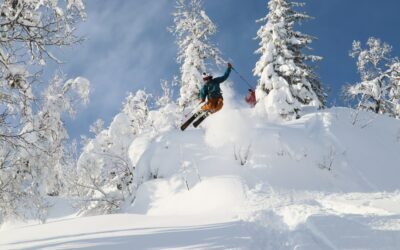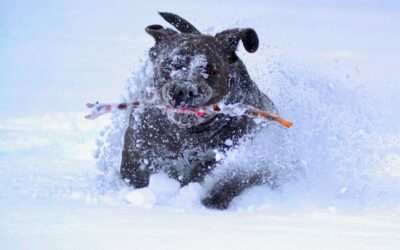Choice of length
Hhe right length of cross-country BC skis for you is determined by several factors. These are weight, skill, and height. On the Åsnes website, every model has its own table for weight, height and length. All skis are designed and built to bring out specific properties. So the tables are (for the most part) different. These tabled are very useful – but they’re only a guide. They’re definitely not the law (we’ll say why below). Here is an example:| Height | Weight (kg) | Ski length |
| -170cm | -70kg | 180cm |
| 170-180 | 70-80 | 190 |
| 180-190 | 80-90 | 200 |
| 190+ | 90+ | 210 |
Camber?
Camber – the height and stiffness of the ski’s central “arch” – has a very specific function in cross-country BC skis. And it’s measured differently. The camber’s designed to afford the ski specific properties appropriate to where it’s “supposed” to be used and the way power’s transferred for forward propulsion and turns. There’s not so much point in measuring a specific grip zone in cross-country BC skis as there is in classic langrenn cross-country skis built for the tracks. Cross-country skiing in the backcountry, good grip’s the first priority. Instinctively, we think about the grip zone, the area centred under the camber. But accounting for load (a pack or a pulk), skill level, terrain and conditions, and the use of skins, there are so many factors that it becomes impossible to calculate a specific a wax pocket.Now, we often see online that this is supposed to be measured by pushing the ski’s contact surface down to the ground with our body weight and noting where that contact starts and finishes. But with most cross-country BC skis, this method’s not massively useful. For a start, it only tells us something about the stiffness in the middle part of the ski. The length of the camber varies according to the ski’s shape, the curve fabricated into the wooden core, and the way stiffness is distributed along the ski’s full length. Most cross country BC skis are developed for buoyancy and propulsion in snow; this is achieved through a stiff middle section and decreasing resistance to pressure towards the front and rear skis. The camber is tuned so that you don’t entirely squash the centre section when you move it forward. In this way, friction against the wax pocket is almost halved. You save effort and reduce mechanical wear-and-tear on skis and skins.General advice
Travel in rugged terrain calls for shorter skis than the open plateau and flats. Beginners might find shorter skis easy to handle. If you spend a lot of time on tracks, length isn’t a factor, because float isn’t an issue; instead, what’s important is camber. People with low body weight might prefer slightly shorter skis, heavier people longer skis. Also remember to factor in your own body weight and the weight of pack or pulk if you’re going to choose a ski for long trips.Basic rules of thumb
General rules of thumb related to the construction of skis are quite universal. It’s a question of physics and design orthodoxy. For example: a wide ski has more material in it so it might be stiffer than a narrow ski.Some general rules:
Want to know more about camber?
This article really goes into camber on cross-country BC skis. It’s written for those who want a deeper understanding of flex, depth and the other properties of cambered skis.

Choosing the right length?
We break it down here!
Vekt faktoren er viktigst for de fleste
In the first place, ski length is determined by height, weight, and skill. And as we’ve shown in the example table above, weight is one of the parameters. For some, height and weight are difficult to square on the tables. This is all right: people are very different. So are skis, for that matter. But if you’re unsure about the length, we’d recommend prioritising your weight, the ski’s grip and your skill.Good grip is the most important priority!
Again, most cross-country BC skis are designed to afford buoyancy and propulsion in snow. This is achieved through a stiff middle section and decreasing resistance to pressure towards the front and rear skis. The camber is tuned so that you don’t entirely squash the centre section when you move it forward. In this way, friction against the wax pocket is almost halved. You save effort and reduce mechanical wear-and-tear on skis and skins. What this means is that, choosing a length, it’s a good idea to settle on a ski neither too stiff nor too soft for your own weight. The aim is a ski that grips as well as it can while maintaining the properties required for gliding forward. Begin with weight in the table. That’s more likely to lead you to an appropriate length.Factors playing a role in the choice of length and model
If you want to be really secure in your choice length, there are several factors at play. The most prominent are weight, skill, use, terrain, whether you have a dog with you and extra load. Here’s an overview of the connections between these factors and what this means when you have to assess the correct length. This provides valuable context when reading the table.| Height | Wight (kg) | Ski length |
| -170cm | -70kg | 180cm |
| 170-180 | 70-80 | 190 |
| 180-190 | 80-90 | 200 |
| 190+ | 90+ | 210 |
Overview – Åsnes cross-country BC skis
It’s not always easy to choose the right cross-country BC ski for the right use. Here’s a little help.

Storing skis until next season
Putting your skis to bed for the summer, clean and protected, is a chore, but it’s got to be done. It’s more than worth it. Here we break down the basics. Your skis will thank you. Actually, you’ll thank yourself come the first snow – for all sorts of reasons…

Tailoring long skins for alpine touring
Wondering how to tailor your skins for alpine touring? Here’s an overview – care and trimming long skins for touring skis.

Eight things to check before you start the season
Before you drop everything at the first sign of snow and rush out to ski, keep yourself and your crew safe by checking that you’re “avalanche ready” before the season really starts!

The NFSA guidance for outdoor dogs
The Norwegian Food Safety Authority (NFSA)’s rules for keeping dogs outdoors, and for interacting with dogs, is useful for adults and children alike.

How to feed a hunting dog
Correct nutrition is the alpha and omega for a healthy, strong and happy hunting dog performing to its limits day after day in the mountains. A well-trained hunting dog can quickly cover more than 60 km in hilly terrain, marshes and woods. So if you’re out for a number of days, feeding is everything.
Hot waxing skins
Hot waxing skins? Yes. That’s right. The rumours are true: you can wax skins. With glide wax. And an iron. And for alpine touring, it works a total treat.